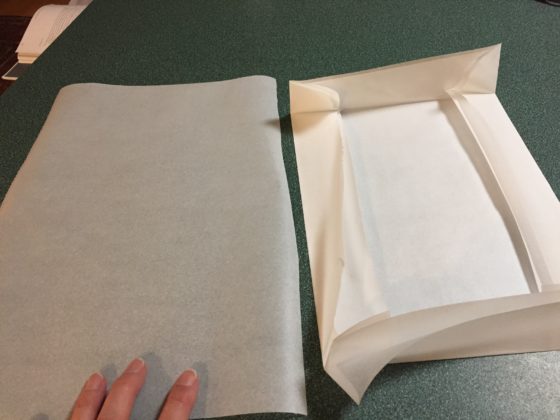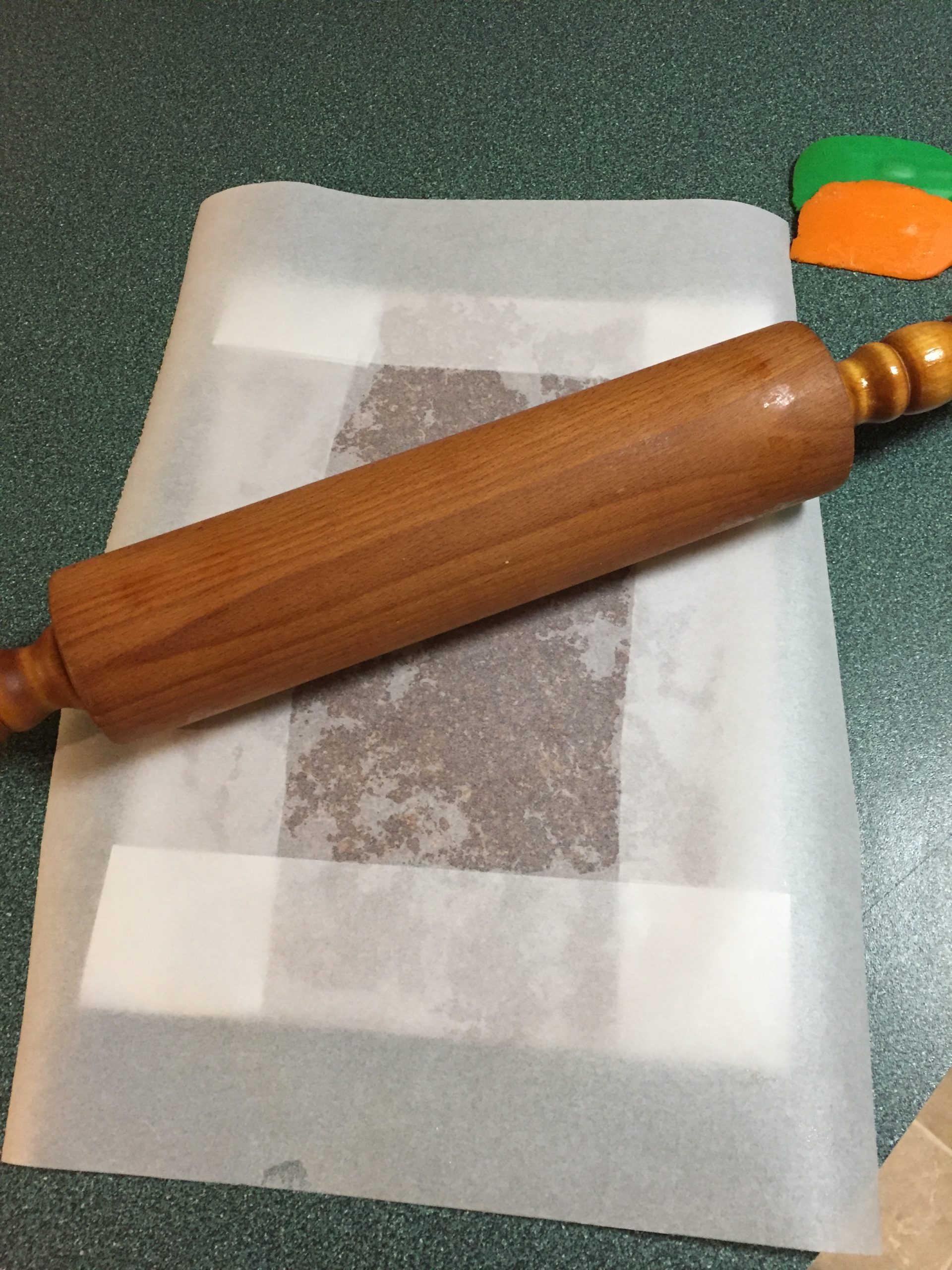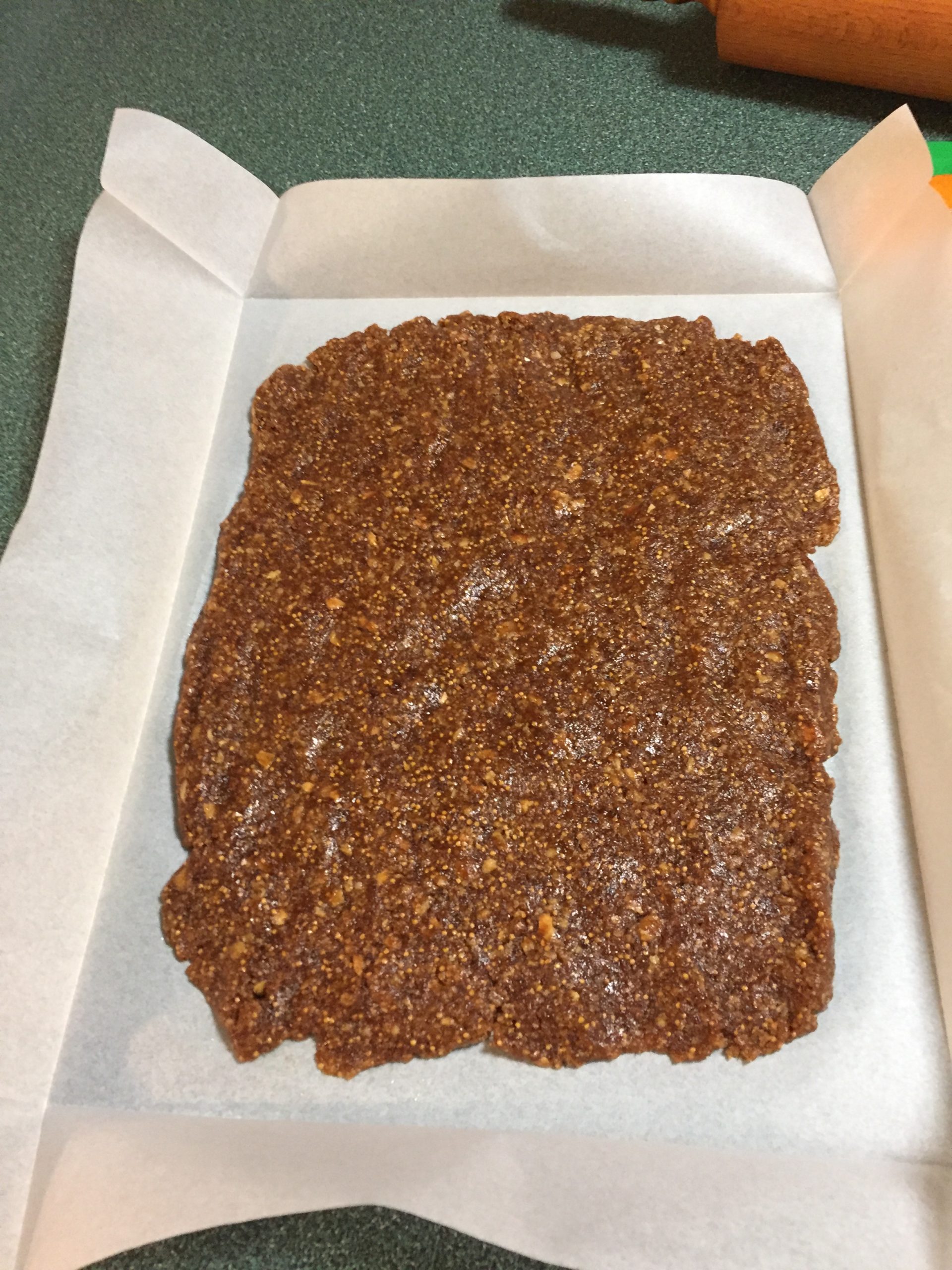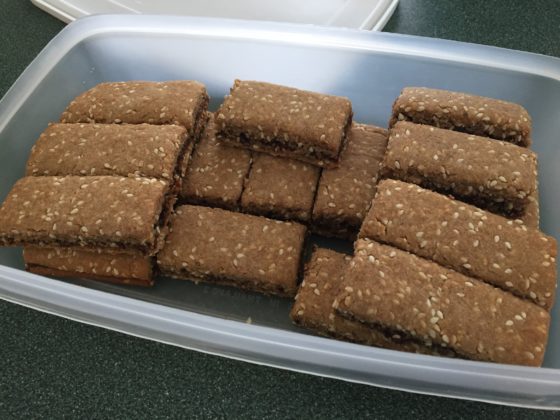
I became aware of Shalane Flanagan and her cookbook “Run Fast. Eat Slow.” on a Thom Hartman interview on NPR in November 2017 just after Shalane won the New York City marathon. After a fascinating recap of her strategy in a field of accomplished international competitors, they shifted to the dietary aspects of her training. She noted how many professional athletes rely on fast-acting sugared products for that burst of energy. The lack of really satisfying meals and treats with long-lasting calories prompted her and a nutritionist friend to create their own recipes.
One of the things I like about the cookbook is the guidance on what to keep in the pantry.
The recipe as presented in the book is:
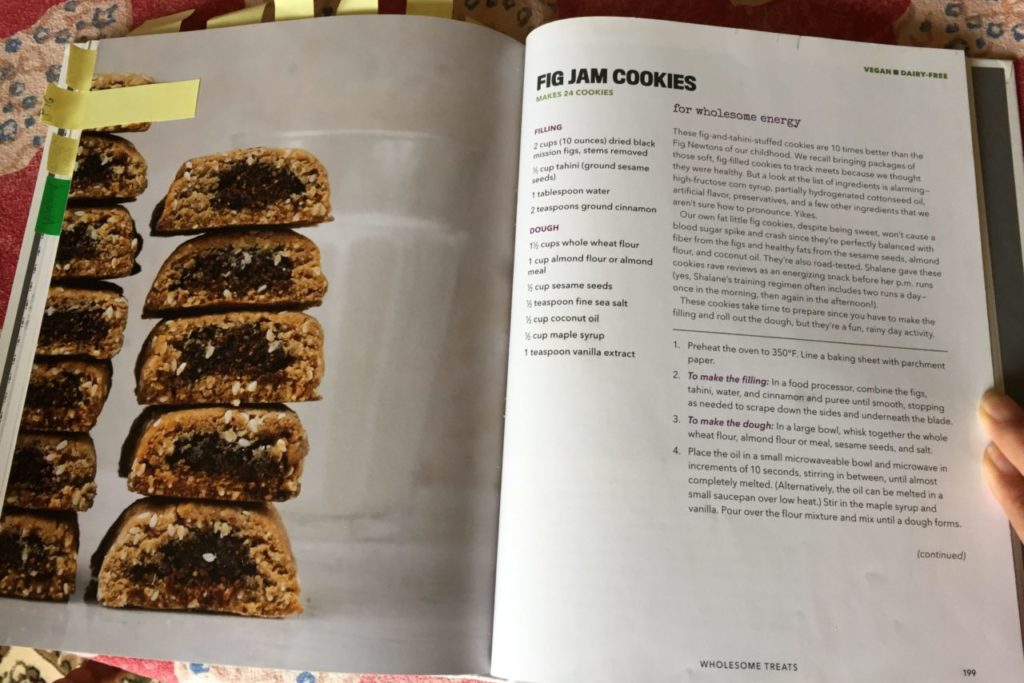
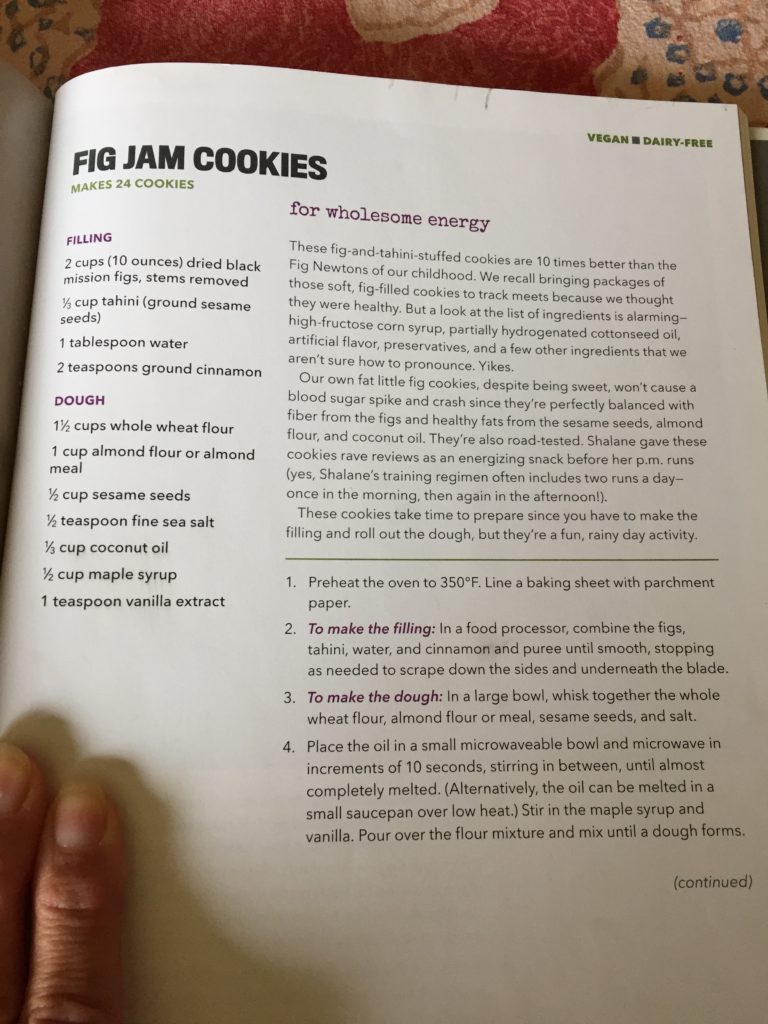
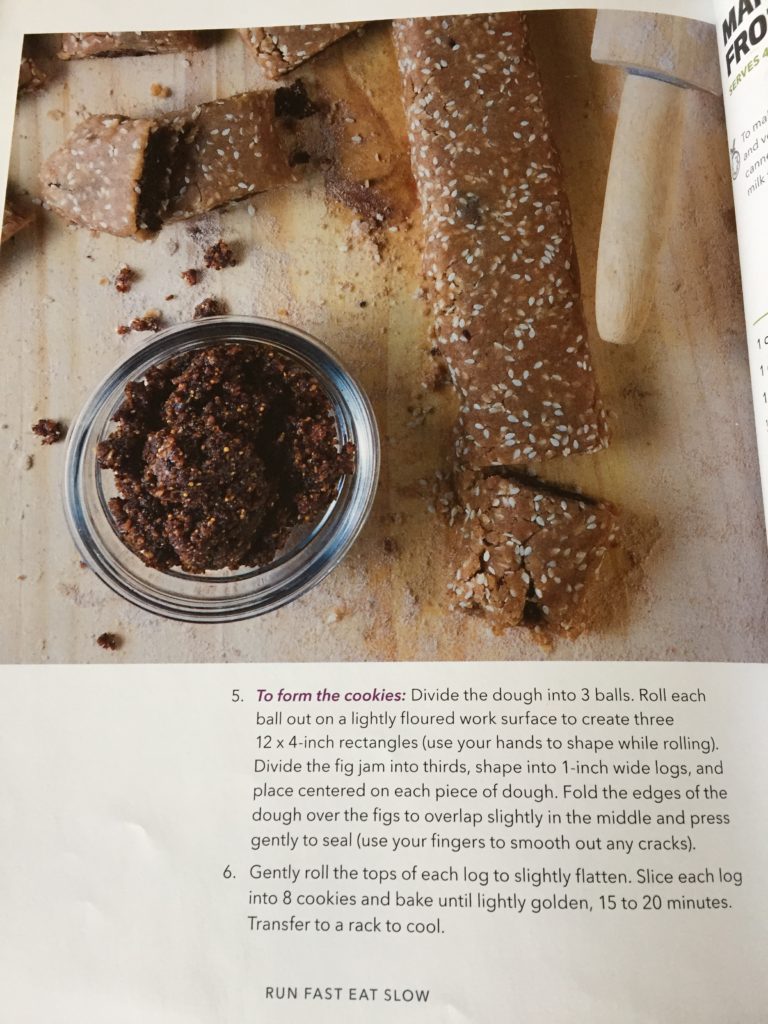
My presentation of this recipe includes a bunch of tips after making it many times. First, I don’t care what kind of figs I use. Moister dried figs can be used without the water. If they are very dry, I add more water or soak them first (after weighing the 10oz). Additionally, I cut the figs into small pieces if they are dry because whole figs will make the Cuisinart vibrate and walk all over the counter. (Perhaps my blade is dull.) They also have enough force that they once broke a piece of plastic on the inside of my Cuisinart cover. (Fortunately I noticed before blending the plastic into the figs.)
The dough is quite crumbly. Instead of three “logs,” I created six so that I could use the bench scraper to help roll the dough around the filling to minimize breakage. This was sufficiently troublesome that I scrapped the logs altogether and modified how I assemble to layered sheets and cut into bars.
Use three 12 x 16 sheets of parchment paper. Stack and fold the edges of two sheets to form approximate 8 x 11 templates. Press the filling into one of the templates, spread it by hand, cover with parchment sheet and roll flat. You will have to open and check corners several times, cutting excess, relocating, and rolling until a rectangle is achieved.
Divide the dough in half. Roll one piece into another parchment similarly coaxing until rectangular and filling corners. Place each rolled layer onto large cutting boards. Fold the excess parchment under the edge of each board on the sides that are next to each other. Line up dough and filling carefully. Lift the two boards like closing a book and press together. If misaligned, you can cut an edge and relocate.
Roll out second layer of dough into parchment, and “book-close” with filling. Lightly roll just to “seal” the three layers. Remove top parchment. Move onto a cookie sheet retaining the lower parchment. Using bench scraper or other cutting device, cut into approximately 32 pieces, 4 rows of 8. I have found 22 minutes cooking time to work best.
